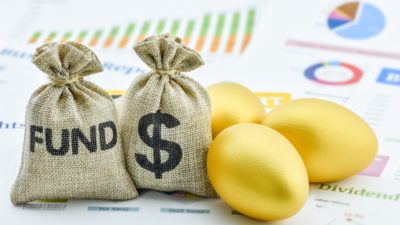Some investors wonder how much money to allocate to each stock.
To start, you should decide on a diversified portfolio of stocks that you conservatively estimate to grow 7-10% annually in the long term. These are high-quality, blue-chip, dividend companies that you determine to be priced at least at fair value, so that you are minimizing risk and maximizing total return.
Let’s say you settled with Bank of Nova Scotia (TSX:BNS)(NYSE:BNS), Canadian Utilities Limited (TSX:CU), and Enbridge Inc. (TSX:ENB)(NYSE:ENB) as a starter portfolio.
Your next question is, how much should you allocate to each? Here are a couple strategies to consider.
1. Equal weight
Buy an equal amount in each company. No, that doesn’t mean buying the same number of shares, but buying the same dollar amounts. Let’s say you have savings of $9,000. Then you would buy $3,000 worth of shares in each Bank of Nova Scotia, Canadian Utilities, and Enbridge.
As a result, you’re spreading the risk of your capital equally between the three blue chips. They’re in different sectors, so if one experiences difficulties in its industry, it is unlikely the others will be affected.
However, no matter how much you diversify, no matter how many stocks you buy, you’re still subject to market risk. When the market tanks, all stocks are likely to tank. There’s no way around that.
From the three positions, you get an average yield of 3.6% for your portfolio. Another strategy is to buy the “best idea.”
2. Best idea
The idea here is to buy the best idea whenever you’ve saved up enough for a purchase. The definition of best idea depends on what your goals are.
If your goal is to maximize returns, then you would buy the most undervalued company on your watch list that you believe the market is mispricing. You may believe that the problem it’s experiencing is temporary, that after it passes, the price of the shares will be trading at normal, historical valuations again.
For example, Canadian Western Bank (TSX:CWB) and Enbridge may be good candidates for maximizing total returns at current levels because I believe they are priced at double-digit discounts.
If your goal is to maximize your income, then you’d want to buy high yield companies that you believe are offering safe yields. In that case, Crescent Point Energy Corp. (TSX:CPG)(NYSE:CPG) is a good candidate, as it offers a high yields of 10.1%.
If you use the “best idea” strategy, you still want to diversify. After all, it’d be foolish to put all your eggs in one basket.
In conclusion
You can take the best of both strategies by allocating equal weights of say $5,000 in your best ideas, while allocating less to your good ideas. Why? For diversification purposes, of course.
Additionally, if your goal is to reach $5,000 in a position, you don’t need to buy it all at once. Actually, it may make more sense to space out your buys in months or even years. After all, most of us don’t have cash lying around all the time.
It is also likely safer to average in to positions instead of buying a lump sum.








